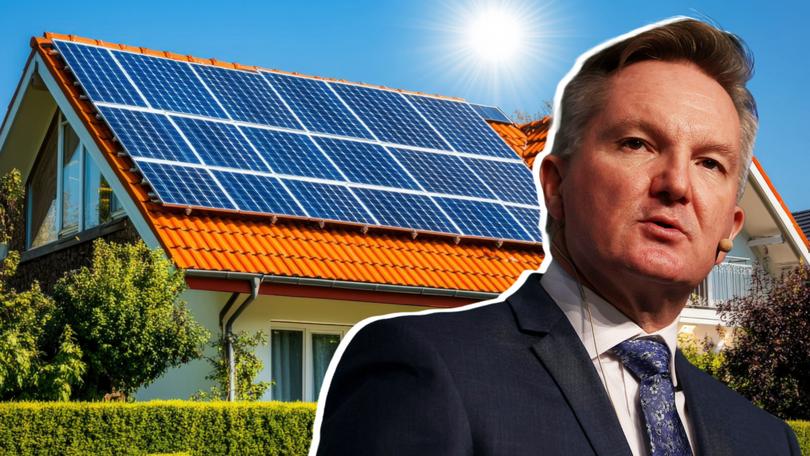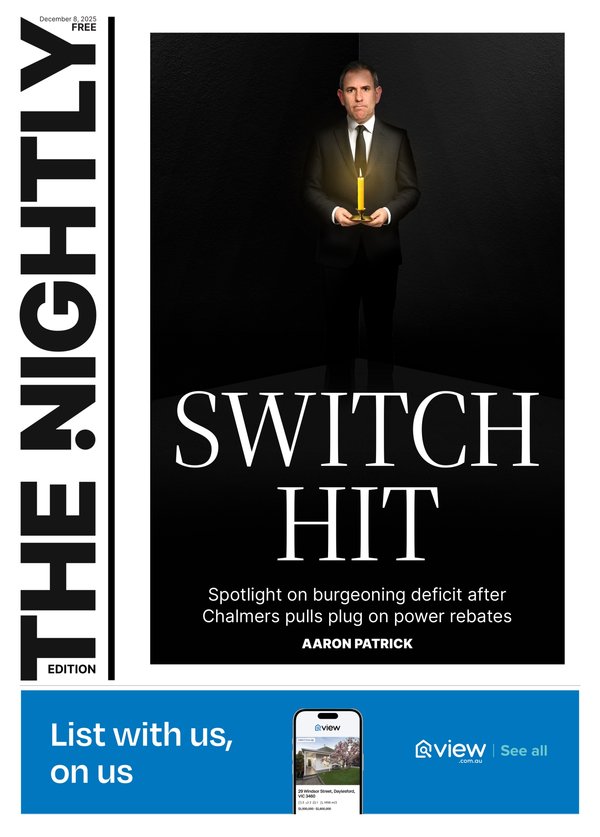Chris Bowen rejects calls for ‘always on power’ such as nuclear, despite mounting threats of mass blackouts

Federal Energy Minister Chris Bowen has rejected calls for more “always on power”, like nuclear, after threats of mass blackouts loom over millions of Australians and energy market operator proposes restricting rooftop solar supplies to protect the shaky power grid.
Four million Australian households face potential restrictions on their rooftop solar supplies as rampant solar power production threatens to flood the power grid and overwhelm local distribution lines with excess electricity.
In a report released on Monday, The Australian Energy Market Operator (AEMO) called for “emergency backstop” powers to switch off or turn down rooftop solar systems in every state, warning that too much of the renewable power risks flooding the power grid and overwhelming local distribution lines with excess electricity.
Sign up to The Nightly's newsletters.
Get the first look at the digital newspaper, curated daily stories and breaking headlines delivered to your inbox.
By continuing you agree to our Terms and Privacy Policy.More than four million rooftop solar systems are already meeting about half of the total demand of the 10 million customers across the eastern seaboard’s National Electricity Market (NEM) — which could rise as high as 90 per cent in some areas within years, AEMO warns.
The trouble is, the growing output from solar generation is pushing out all other forms of power generation — like coal and gas-fired plants — that keep the system stable and is putting the NEM at risk of “operating insecure for extended periods”.
But the Energy Minister said the uptake of solar was part of modernising the power grid with renewables to replace goal as Australia’s main source of electricity.
A spokeswoman for Mr Bowen echoed the AEMO’s call for supporting the “uptake of rooftop solar, residential batteries and electric vehicles while maintaining reliable electricity support through a secure grid”.
“AEMO’s advice also highlights how Australia’s energy grid is increasingly decentralised and able to draw on household solar, which is fundamentally incompatible with an expensive, always-on power like nuclear,” she told The Australian.
In its report, AEMO said the growth in rooftop solar was making it increasingly challenging to manage grid stability. It said on some sunny days, the generation from rooftop solar meant demand for electricity from the grid was falling to historic lows.
AEMO chief operations officer Michael Gatt said the operator had flagged the issue of these “minimum system loads” for years and was seeking to work with state governments and network operators to develop solutions.
“AEMO does not want to directly control people’s rooftop solar,” Mr Gatt said.
“In rare circumstances AEMO may need to take action to secure the grid, such as directing off grid-scale generation, to solve these emergency events which often occur at the same time as unplanned generation and transmission outages.”
He said these actions would “assist in keeping the power system secure, while also enabling the growth of rooftop solar installations”.
AEMO said the powers needed to be rolled out across all states by next year — they already exist in South and Western Australia, Victoria, and some parts of Queensland — to maintain “a secure and reliable supply of electricity”.
Without introducing the backstop, more drastic action would need to be taken to protect the grid — such as trying to “deliberately” trip solar in some areas, or dumping excess solar power being fed into the network.
Just last week, NSW faced the threat of mass blackouts after a spate of scheduled outages at coal-fired power stations coincided with a heatwave that forced the AEMO to use emergency powers to ensure the state had sufficient electricity supply.
Now, every week until Christmas, rural communities in the state are at risk of days-long blackouts as more than 2000 Essential Energy workers began a series of strike actions — one 72-hour stoppage per week until Christmas — over an ongoing wage dispute.
Essential Energy is the major electricity provider for towns in regional and remote NSW, except for Newcastle, Wollongong and the Hunter.
Electrical Trades Union NSW secretary Allen Hicks told The Daily Telegraph its members would would not restore power to blackout affected areas unless there was a direct threat to life — such as by restoring power to hospitals.
